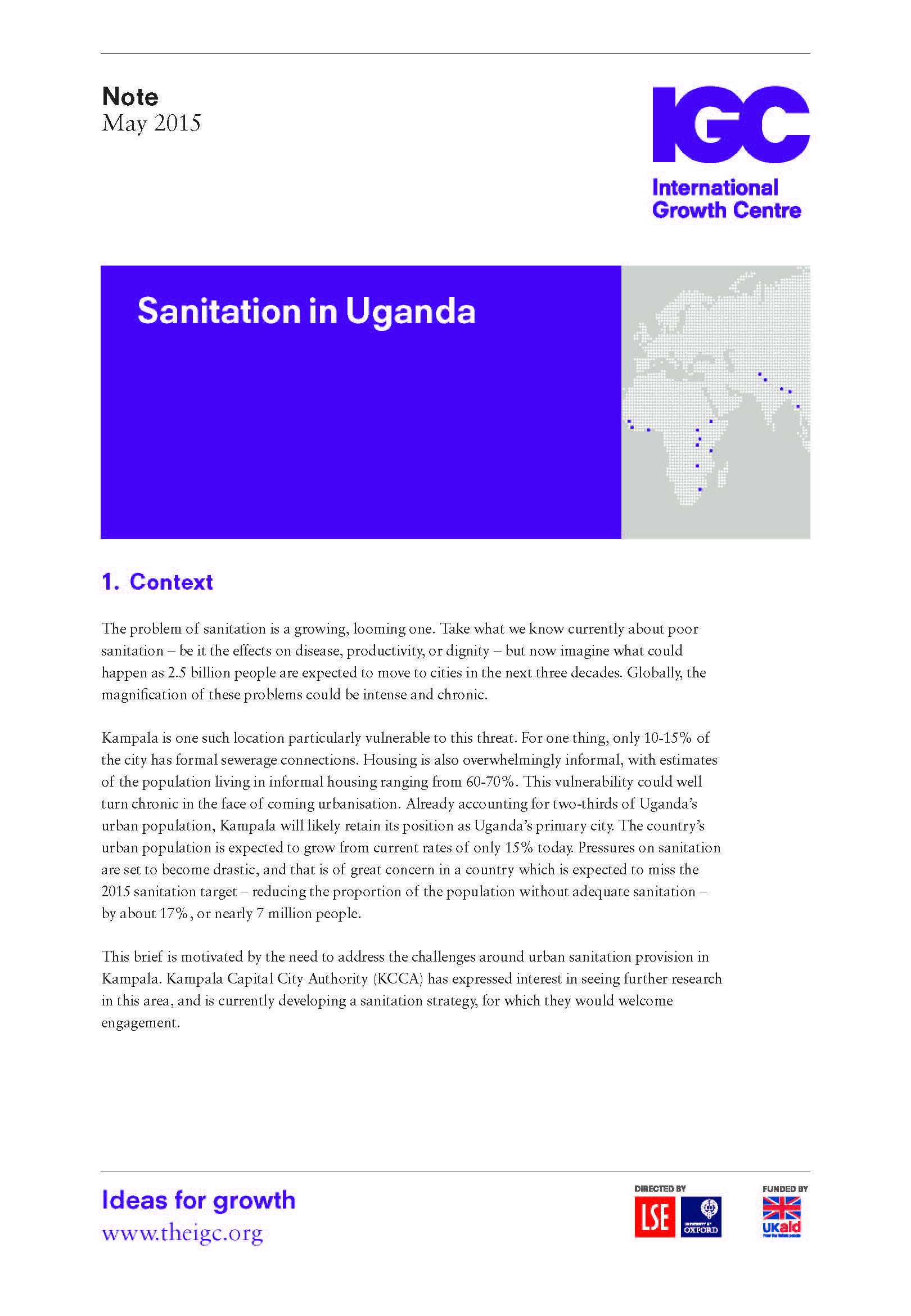
Sanitation in Uganda
-
Supplementary Paper: Sanitation in Uganda
PDF document • 311.33 KB
 The problem of sanitation is a growing, looming one. Take what we know currently about poor sanitation – be it the effects on disease, productivity, or dignity – but now imagine what could happen as 2.5 billion people are expected to move to cities in the next three decades. Globally, the magnification of these problems could be intense and chronic.
The problem of sanitation is a growing, looming one. Take what we know currently about poor sanitation – be it the effects on disease, productivity, or dignity – but now imagine what could happen as 2.5 billion people are expected to move to cities in the next three decades. Globally, the magnification of these problems could be intense and chronic.
Kampala is one such location particularly vulnerable to this threat. For one thing, only 10-15% of the city has formal sewerage connections. Housing is also overwhelmingly informal, with estimates of the population living in informal housing ranging from 60-70%. This vulnerability could well turn chronic in the face of coming urbanisation. Already accounting for two-thirds of Uganda’s urban population, Kampala will likely retain its position as Uganda’s primary city. The country’s urban population is expected to grow from current rates of only 15% today. Pressures on sanitation are set to become drastic, and that is of great concern in a country which is expected to miss the 2015 sanitation target – reducing the proportion of the population without adequate sanitation – by about 17%, or nearly 7 million people.
This brief is motivated by the need to address the challenges around urban sanitation provision in Kampala. Kampala Capital City Authority (KCCA) has expressed interest in seeing further research in this area, and is currently developing a sanitation strategy, for which they would welcome engagement.


